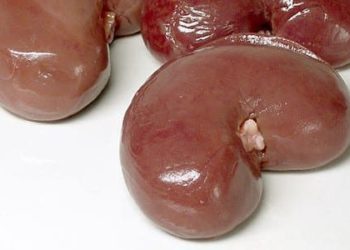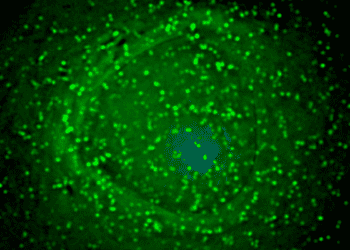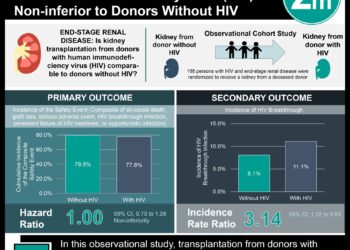Urinary mRNA profiling accurately diagnoses rejection in kidney allografts
Image: PD
1. A molecular signature of three urinary RNA species was sensitive and specific in identifying acute cellular rejection in kidney allografts.
2. The signature also shows prognostic values in predicting acute rejections that developed later.
Evidence Rating Level: 2 (Good)
Study Rundown: Proposed as a method to diagnose acute cellular rejections, urinary mRNA profiling has a significant advantage over the gold standard needle biopsy in that it is non-invasive. Additionally, the diagnostic signature may reveal forthcoming rejection that hasn’t shown up on biopsy yet, which is welcome news to clinicians that manage transplant patients. The downside is also apparent – sensitivity and specificity in the 70% range are impressive but may not be sufficient. Current sensitivity would miss roughly 2 out of every 10 acute cellular rejections.
Click to read the study, published today in NEJM
Click to read an accompanying editorial, published today in NEJM
Relevant Reading: Noninvasive prediction of organ graft rejection and outcome using gene expression patterns
In-Depth [prospective study]: The study evaluated urine mRNA measurement as a non-invasive diagnostic tool for acute cellular rejection. The study measured urinary mRNA levels of various protein products at multiple time points after transplantation up to 12 months.
The best fitting diagnostic signature contained the following three mRNA species: CD3ε chain, interferon-inducible protein 10 (IP-10), and 18S rRNA. ROC curve analysis showed that the three-gene signature had an area under curve, or AUC, of 0.85 (95% confidence inverval, [CI], 0.78 to 0.91; P<0.001). The diagnostic signature was 79% (95% CI, 67 to 91) sensitive and 78% (95% CI, 71 to 84) specific in discriminating between biopsy specimens with acute cellular rejection from those showing no rejection. In the external-validation data set, AUC dropped to 0.74. Sensitivity and specificity were also lower, at 72% and 71%, respectively.
The diagnostic signature remained flat and under the diagnostic threshold for specimens without rejection, whereas increased markedly during the 20-day period leading up to the first specimen showing acute cellular rejection.
More from this author: Omalizumab relieves symptoms in difficult-to-treat chronic idiopathic urticaria, New device reduces acid exposure in gastroesophageal reflux disease, Neurostimulation beneficial in Parkinson’s disease with early motor complications, Rivaroxaban has no net clinical benefit over enoxaparin for thromboprophylaxis in acutely ill patients, Long term functional outcomes similar with surgery, radiotherapy in prostate cancer patients
© 2013 2minutemedicine.com. All rights reserved. No works may be reproduced without written consent from 2minutemedicine.com. Disclaimer: We present factual information directly from peer reviewed medical journals. No post should be construed as medical advice and is not intended as such by the authors or by 2minutemedicine.com. PLEASE SEE A HEALTHCARE PROVIDER IN YOUR AREA IF YOU SEEK MEDICAL ADVICE OF ANY SORT. Content is produced in accordance with fair use copyrights solely and strictly for the purpose of teaching, news and criticism. No benefit, monetary or otherwise, is realized by any participants or the owner of this domain.




![Macitentan better than placebo for preventing progression of pulmonary arterial hypertension [SERAPHIN Trial]](https://www.2minutemedicine.com/wp-content/uploads/2013/08/ca68dc0329bef0b42ccae7b6656a0f_gallery-350x250.jpg)


